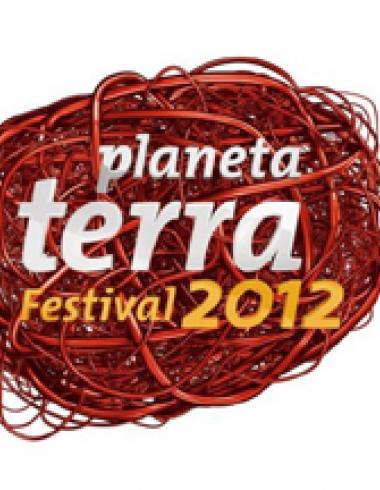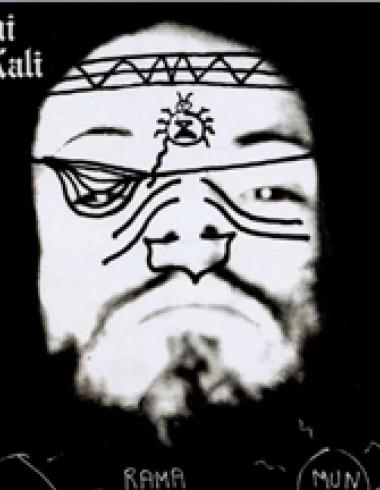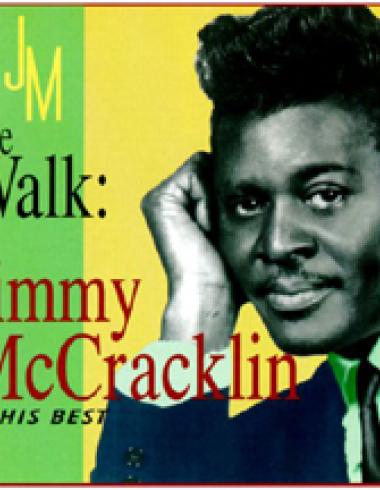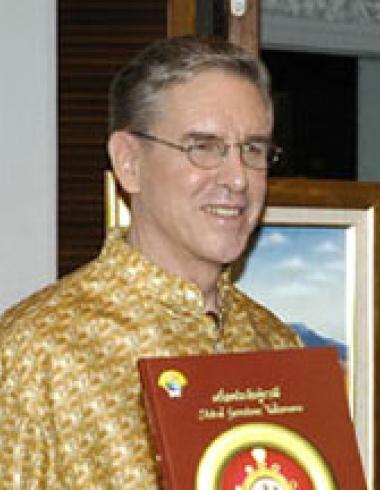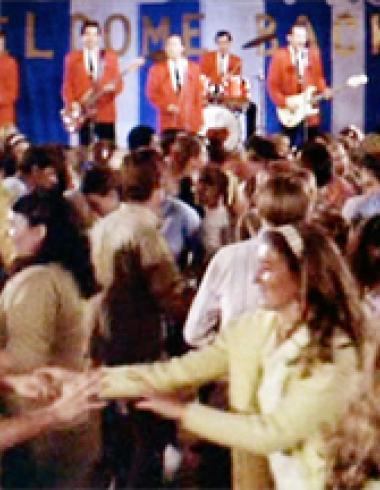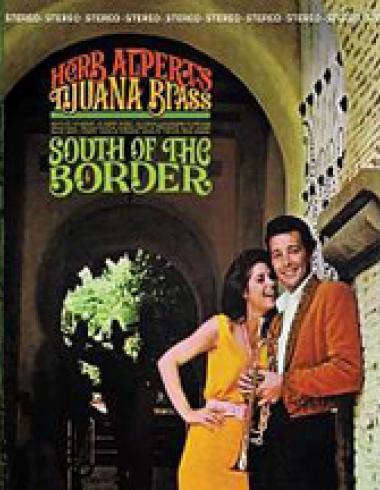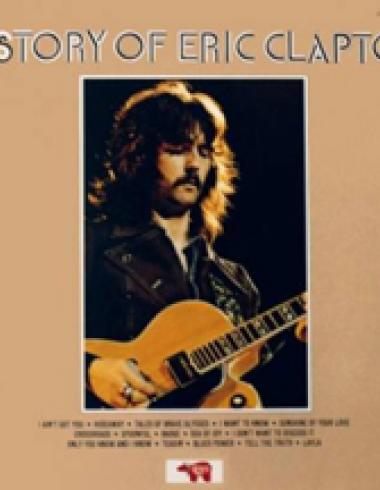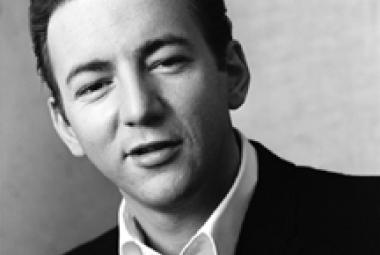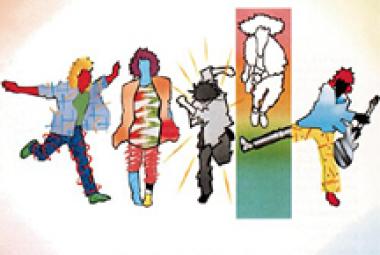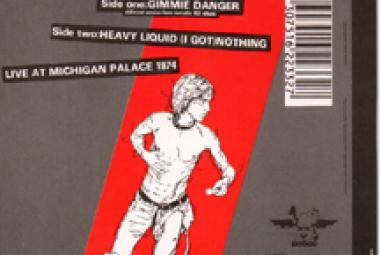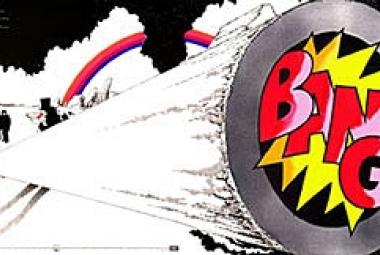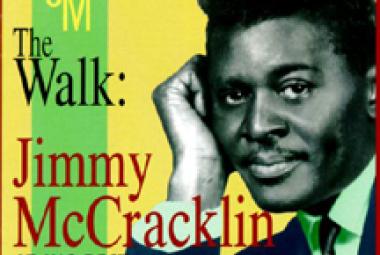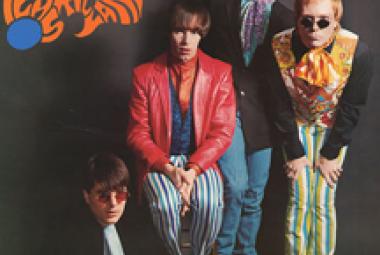THE UNDER-APPRECIATED ROCK BAND OF THE MONTH FOR JULY 2013: THE KLUBS
I don’t normally get caught up in the hype about someone or other; but then again, when I am ordering something from Bomp! through one of their thrice-weekly or so emailings, there are normally no pictures. So when THE KLUBS were mentioned as the number one choice by Record Collector magazine, I decided to see what the fuss was all about.
* * *
As best I can recall, the above albums were the first two that I acquired in the Pebbles series that has filled my life with great, unknown 1960’s garage rock and psychedelic rock for more than 30 years. These LP’s, Pebbles, Volume 9 and Pebbles, Volume 10 were the last two albums in the first group of 10 that was released in 1979-1980, purportedly by BFD Records of Kookaburra, Australia. Actually, the series was masterminded by Greg Shaw, founder of Bomp! Records in North Hollywood.
Why he came up with the Australian connection is unknown to me, but I remember reading a review decades ago in the Village Voice of an album by the Lime Spiders, an Australian rock band that started out at least as a psychedelic-revival band. The article mentioned that interest in 1960’s American garage rock started in Australia; and looking back, I wonder whether that was for real, or whether the writer was just fooled by the supposed origin of the first Pebbles albums.
“BFD” was well known to me in North Carolina as an abbreviation for “big f--king deal”, and it might be a nationwide or worldwide bit of shorthand. Anyway, it turns out that there is no such place as Kookaburra, Australia; a kookaburra is a bird that lives in Australia. I should have known that Greg Shaw was pulling some kind of stunt: He also talked about Dacron, Ohio, and that isn’t a real city either (though Akron is) – Dacron is a type of artificial fibre.
* * *
The first Pebbles album came out in 1978, in a modest release that was apparently distributed mostly among top record collectors. The label name was Mastercharge Records; most of you likely remember that as being the original name for what is now called Master Card, so I suspect that the release was financed by credit card advances. Greg Shaw had big plans for the series, and even this first edition was called “Volume 1” (though the one on BFD Records was not so marked). The album was subtitled “Original Artyfacts from the First Punk Era”, a takeoff on the subtitle of the legendary compilation album Nuggets: Original Artyfacts from the First Psychedelic Era, 1965-1968 that had come out six years earlier.
In 2008, on the 30th anniversary of the original Pebbles release, Bomp! Records put out a special reissue on clear vinyl complete with the pink xeroxed sheet with Greg Shaw’s liner notes that had been included with the 1978 album.
* * *
In 1983, another long series of Pebbles LP’s came out on a brand-new label called AIP Records (standing for “Archive International Productions”) that was openly affiliated with Bomp! Records. As it happened, the very next disc, the Pebbles, Volume 11 LP – with catalogue #AIP-10001 – would turn out to be my favorite album in the entire series. But even at that point, the idea that there were 10 volumes in the Pebbles series, and that these two (Pebbles, Volume 9 and Pebbles, Volume 10) were so good made me determined to get them all. Before it was over, I had purchased close to 100 LP’s and CD’s with the Pebbles name, and I still don’t have them all. In fact, some were mostly circulated in Great Britain under the name Best of Pebbles, and I only ever saw them one time – at the same Schoolkids Records store across from the North Carolina State University campus on Hillsborough Street where I first saw the original Pebbles LP’s. I sure wish I had bought at least one or two that day; not even Bomp! Records has a full set of those albums.
* * *
On the back side of the Pebbles, Volume 9 and Pebbles, Volume 10 LP’s were cool liner notes that normally (not always) gave some information about the bands and the songs on the album. Greg Shaw wrote the liner notes for the original Pebbles release (they are available online now).
For the BFD Records releases – even the most recent CD’s on AIP normally have a copyright notice for BFD Productions – someone else was brought in to write the liner notes, since the ones that Greg Shaw did were said to be mostly geared to serious collectors. This gentleman’s name is Nigel Strange, and he is supposedly the editor of a magazine called Web of Sound. I haven’t been able to find out anything about this person on the Internet, and I suspect that he is yet another fiction, as is “A. Seltzer” (clearly a reference to Alka-Seltzer) who wrote the crazed liner notes for the Pebbles, Volume 2 LP. I loved reading the liner notes as I played the Pebbles albums (still do in fact).
For the most part, the bands on the Pebbles albums were completely unknown to practically everyone when they came out, but a few were virtually unknown songs by better known bands. The Pebbles, Volume 9 LP features a track by the Outsiders, to my mind a first-rate American band that had a big hit with “Time Won’t Let Me” and released several more singles, along with four albums. If memory serves, Greg Shaw oversaw a Collector’s Choice compilation (or something like that) of the Outsiders’ music – I assume for Capitol Records, since that is the label that originally released their music. I have all of their albums except Album #2; despite the boring album names, their stuff is really good.
I also remember New Colony Six back then (who also have a track on the Pebbles, Volume 9 LP), though for the life of me I can’t remember what song of theirs I heard back in the day.
* * *
The song that I love best on the Pebbles, Volume 10 LP is “Train Kept A-Rollin’” by the Bold (also known as Steve Walker and the Bold) – actually there is a song by this band on both the Pebbles, Volume 9 LP and the Pebbles, Volume 10 LP. This was the first time that I had heard this song; I have since collected several more that include versions of “Train Kept A-Rollin’” by luminaries like the Yardbirds and Aerosmith, and it has become one of my very favorite songs regardless of who is doing it. It is hard to top this blistering performance, however.
“Train Kept A-Rollin’” is a jump blues song that was originally recorded by Tiny Bradshaw in 1951, the 1956 rockabilly recording of “Train Kept A-Rollin’” by the Johnny Burnette Trio is said to be the first rock and roll record to deliberately use distorted guitar. (The trio is also known as the Rock and Roll Trio but are not to be confused with the Johnny Johnson Trio, where Chuck Berry started out). This song even predates Link Wray’s “Rumble” in this regard (that instrumental came out in 1958), though Wray is still the man credited with bringing power chords to rock guitar.
* * *
The Pebbles, Volume 10 LP was my first introduction to the Ugly Ducklings, one of the greatest 1960’s Canadian rock bands; I have written about them before on several occasions. The cut here is one of their best songs, “Just in Case You Wonder” (sometimes called “Just in Case You’re Wondering”); the liner notes mention: “Apparently they have reformed and released a new LP in 1980 with remakes of some of their classics, though not this one.” I managed to find that album – Off the Wall – and it now hangs on display in my office, completely battered by Hurricane Katrina and utterly unplayable.
The Pebbles, Volume 10 LP is also how I came to find out about the Human Expression, one of several garage-rock and psychedelic-rock bands that I wrote about in Wikipedia in the pre-UARB days. The album also includes a song by the Ides of March that came out before their hit song, “Vehicle”; as well as an early song by the Five Americans of “Western Union” fame. “Primitive” by the Groupies, one of the best songs on this album was later featured on one of the Born Bad CD’s.
* * *
Yet another band on the 10th Pebbles LP, the Moonrakers featured members of the later band Sugarloaf that had two hit songs in the 1970’s: “Green Eyed Lady” (1970) that I simply loved back in my college days (there is a “long version” on their album, as well as the short version that is all they play anymore on the radio); and “Don’t Call Us, We’ll Call You” (1975). The latter song was aimed at CBS Records (a/k/a Columbia Records) after they turned down Sugarloaf for a recording contract; in retaliation, the band included toward the end of the song the touch tones for an unlisted telephone number at the record company, plus those of a public number at the White House.
* * *
What really made an impression after awhile, however, is that more than a few of these bands were completely unknown even to the people who put the Pebbles albums together. Introducing “Train Kept A-Rollin’” by the Bold on the Pebbles, Volume 10 LP, the “Nigel Strange” liner notes say: “. . . I sure wish I knew more about them”. About the Wig/Wags, all they have is: “I used to think this was a Texas group, but since they aren’t included in the recently published Journey to Tyme [here they insert a plug and address for the book] I guess it’s not.” The liner notes for the Foggy Notions have a nice description of their great song “Need a Little Lovin’” but about the band they say simply: “A mystery group”.
The situation is much the same on the Pebbles, Volume 9 LP. For the second track by the LA-area band Byron & the Mortals: “. . . about whom nothing is known”. And: “The only thing I know about the Knaves is that lead singer Howard Berkman later turned up in some early 70’s Chicago bands.” The Banshees? “The group was Chicago-based, but that’s all I can tell you.” One more: “I know absolutely nothing about the Bugs.”
In order not to sound monotonous, the liner notes don’t always state outright that all I know about such-and-such group is that I found this here 45, but several of the liner notes are descriptive only. It wasn’t just these albums; most of the Pebbles liner notes were like this, particularly in the early years. Sentences like “Guess what? Another mystery band” and “Here finally is a group that I know something about” were commonplace on the back covers.
It didn’t always stay that way of course. We have yours truly to thank for getting the word out about the mysterious rock artist Milan, also known as Milan Radenkovich, also known as Rick Rodell, also known as the Leather Boy, also known as Milan (the Leather Boy); copies of Ugly Things #34 with my article about Milan are still available!
I found a retrospective album by one of the mystery bands introduced to me by the Pebbles series that also had songs by an associated band, though I can’t call it to mind; I thought that it was the Dovers, but they aren’t in my old LP database, so I guess not. I haven’t cleaned it up yet from the Katrina debacle, that much I know.
I knew basically nothing about the people behind Pebbles back then, but they were clearly experts in these matters. At this point in time, the records had been made just 12 or 15 years earlier, and I was amazed that all information about some of these rock bands could have simply vanished.
* * *
It was like that about THE KLUBS also. Despite having a strong local following in Liverpool for several years, the home city of the Beatles f’crying out loud, the band had faded into complete obscurity. When the people at Record Collector magazine – another bunch that presumably knows what they are doing – embarked upon a major investigation of British psychedelia, they scoured music papers that were being circulated in the late 1960’s. One intrepid soul, John Reed stumbled upon an intriguing ad in the December 1968 edition of New Musical Express that had a photograph of a five-piece band called the Klubs that had just put out a single on Cam Records. (Ironically, one of the bandmembers turned out to be a man named John Reid). But the band and the record label were equally unknown; absolutely nothing else could be found about the band except this one advertisement.
In March 1999, Record Collector published the results of their investigation, which included an alphabetical listing of the psychedelic rock bands that had been uncovered in their search. The NME ad about the Klubs – which included a photo of the band in face paint like the Crazy World of Arthur Brown was using (their hit single “Fire” had come out earlier in 1968) – was deemed worthy of inclusion in the magazine edition.
Here is all that could be included in the Record Collector issue in their listing next to the ad: “No one we contacted had ever heard of the Klubs or the label they apparently recorded for. Any information would be warmly appreciated.” It is probably a good thing that the band was listed with the K’s; had they been buried in the A’s or C’s, they might still have escaped notice.
* * *
Part of the reason has to do with the Liverpool music scene in the 1960’s: Other than you-know-who, most of the big British Invasion bands came from somewhere else. The Beatles’ early competitors on the American charts were the Dave Clark Five; their first big hit song “Glad All Over” hit the Top Ten in February 1964, though the Five wouldn’t make #1 until “Over and Over” came out in November 1965. The Dave Clark Five were from North London and were being promoted as the progenitors of the “Tottenham Sound”.
The Rolling Stones were from London, as were the Kinks, the Who and the Yardbirds. The Animals came from Newcastle, an industrial backwater like Liverpool, though on the opposite coast. The Hollies were formed in Manchester, though the bandmembers came from East Lancashire. The Moody Blues were from the Birmingham area; Birmingham, Alabama (one of the first major industrialized cities in the American South) is named for the British city.
Though only one of the big acts came from there, other 1960’s bands were based in Liverpool. Gerry and the Pacemakers is likely the best known; like the Fab Four, this band was managed by Brian Epstein, and their records were produced by George Martin. Their American hits include “Don’t Let the Sun Catch You Crying” and “Ferry Cross the Mersey”, a reference to the Mersey River that runs by the city – in case you are wondering why there has always been so much “Mersey” talk surrounding the Beatles.
The Searchers is another Liverpool band that had numerous hits in the U.K., though they were less successful in the U.S.; their biggest hit songs here were remakes of “Love Potion No. 9” and “Needles and Pins”. The Swinging Blue Jeans barely missed the U.S. Top 20 with their cover of “Hippy Hippy Shake”, which was also recorded by the Beatles. Others include the Cryin’ Shames (not to be confused with the Cryan’ Shames, an American band from the same time period), the Merseybeats, the Hideaways, the Koobas (also known as the Kubas), and one of the first all-female rock bands, the Liverbirds.
* * *
To the surprise of the folks at Record Collector, numerous Klubs fans responded to the mention of the band; they were even contacted by one of the original bandmembers, Norris “Noz” Easterbrook. Within months, Tenth Planet Records rushed a vinyl-only album called Midnight Love Cycle to market; the 1,000 discs in the pressing were nearly sold out when Record Collector justly named the record “Album of the Year” for 1999, ahead of releases that year of albums by much better known bands like Fleetwood Mac and Small Faces.
In 2000, Radio Merseyside broadcast two separate interviews with the band, along with selected tracks from their album. A daily newspaper, the Liverpool Echo published a full-page article on the rediscovery of the Klubs, under the headline: “The Psychedelic Sound Makers”.
The Cavern Club had been revived (again), and the Klubs put in an appearance in their old stomping grounds on May 27, 2000; even though singer Paddy Breen had a bad head cold, and guitarist Trevor Griffiths couldn’t be there because of a broken leg.
In 2003 and/or 2004, Phantom Import Distribution and then Wooden Hill Records put out a CD also called Midnight Love Cycle that included the tracks from the Midnight Love Cycle LP plus five songs from the 2000 concert by the Klubs at the Cavern Club; two of these live songs – “Train to Nowhere” and “A Simple Song” – were not among the 12 songs on the original LP. Rounding out the bonus tracks are four very nice post-Klubs songs: “Unknown” by Strife from 1972 (featuring John Reid), two songs called “We Will Always be Together” and “One Last Time” by the Lettermen (not the American band called the Lettermen, needless to say) that included Trevor Griffiths (also from 1972), and a 1999 demo of “I Wonder” by John Reid that featured Norris Easterbrook on bass.
* * *
The Klubs formed at the Birkenhead Institute for Boys, located in a borough called Wirral, which is across the Mersey River from Liverpool. Originally a band by the name of the Klubs was put together in just two days so that they could enter an R&B contest on the Isle of Man in September 1965 – and they actually won the contest.
By the end of the year, the line-up had settled into a sextet: Paddy Breen (vocals), Alan Walker (vocals, harmonica), Trevor Griffiths (lead guitar), John Reid (rhythm guitar), Norris Easterbrook (bass), and Kenny Marshall (drums). In the early years, they were a hard-driving rhythm and blues band that performed a lot of covers of Rolling Stones and Pretty Things songs. They made several trips to London for gigs, including appearances at Tiles and the well-known Marquee. In one show in July 1966 at Tiles, they were actually the headlining band, with supportive acts the Fleur de Lys and the Eyes (not the same band as the UARB, the Eyes).
But mostly they began establishing themselves as a leading band in the post-Beatles Merseyside scene. They were fixtures at the legendary Cavern Club; the Hideaways boasted more dates there (over 250 appearances) than the Beatles themselves, but the Klubs are ranked #3 in that regard. After they signed a management contract with Cavern Enterprises, the Klubs were beginning to perform more original material; as a harmonica player, Alan Walker became sort of a sixth wheel in the Klubs and moved on.
Now a psychedelic band with a primitive light show, the Klubs began taking a “flower power” approach in their performances, complete with “Love not War” sloganeering. Sadly, drummer Kenny Marshall drowned in a boating accident shortly after leaving the band; he was replaced in the band by Peter Sinclair-Tidy, who had been in another local band called Crazy Chains.
* * *
The first single by the Klubs was a demo made in March 1967 for Chart Records called “Livin’ Today” that oddly featured the horn section from the Liverpool Philharmonic Orchestra. They appeared the following month on a television show called First Timers with a performance of another original song called “Only John Tring”; an acoustical treatment of the song that was recorded in Paddy Breen’s bedroom survives and appears on the compilation LP (Midnight Love Cycle) and CD (Midnight Love Cycle) shown earlier. Scratchy and muddy though it might be, this recording proves beyond doubt that the Klubs were wild men from the beginning.
In July 1967, the Klubs were given a recording test at EMI’s famed Abbey Road Studios, renamed for the Beatles’ penultimate album, Abbey Road in 1970. Staff producer Alan Paramor oversaw a marathon recording session, where the Klubs worked on covers of Cream’s “NSU”, and “Desdemona” by John’s Children (back when Marc Bolan, later of T. Rex was a bandmember), plus a new recording of their own song “Livin’ Today”. Paramor called the band “unrecordable” and sent them on their way.
After auditioning the Klubs at a nightclub called the Pink Flamingo, Vic Smith signed them to a management deal with Don Arden’s company Aquarius. As a result, in early 1968, the Klubs again sort of followed in the Beatles’ footsteps and arrived at Decca Records – actually, Decca had famously decided against signing the Fab Four – where four tracks were laid down according to company records. Two were covers of the Beatles’ “Drive My Car” and Jimi Hendrix’s “Fire” – the latter song (apparently recorded at a later time) is the only cover song on the Midnight Love Cycle CD – plus their own songs “Midnight Love Cycle” and “Ever Needed Someone”. “Midnight Love Cycle” also became the title of their retrospective albums.
* * *
Of all the meanings that “Midnight Love Cycle” might have, the song turns out to be about a bicycle. As stated in the liner notes, “Midnight Love Cycle” bears more than a passing resemblance to the May 1967 psychedelic single “My White Bicycle” by Tomorrow. However, the Klubs claim never to have heard this song.
I have a copy of Tomorrow’s classic self-titled album, Tomorrow, and it is not too hard to find; there are both black-and-white and color versions of the front cover. “My White Bicycle” also appears on the second Nuggets box set, Nuggets II: Original Artyfacts from the British Empire and Beyond, 1964-1969. Remarkably, all four discs from Nuggets II came through Katrina more or less unscathed, and I have them all cleaned up and playable. As I recall, I found most of them still in their original box.
The band’s drummer Twink (real name: John Alder) was originally in a tough rhythm and blues band called the Fairies – it won’t be much longer before that band joins the ranks of the UARB’s – and is perhaps best known as the drummer for the Pretty Things on their ground-breaking 1968 concept album called S.F. Sorrow.
Twink is also renowned as a founding member of the hard psych band the Pink Fairies, along with the Deviants’ Mick Farren and Steve Peregrine Took, who was Marc Bolan’s partner in the original Tyrannosaurus Rex band.
Besides Twink, the other bandmembers in Tomorrow – originally called the Four Plus One – included guitarist Steve Howe, which was later in Yes; Junior Wood; and Keith West, who was evidently the best known member of the band when their album came out. Of note is the fact that Tomorrow was featured on the very first of the Peel Sessions by DJ John Peel on BBC Radio 1, on September 21, 1967.
Tomorrow – back when they were called the In Crowd – also had a part in an early rock opera that was actually called A Teenage Opera; the project was spearheaded by Mark Wirtz, who had had the idea as early as January 1966. After writing the lyrics for the song, Keith West released a single from the rock opera called “Excerpt from A Teenage Opera (Grocer Jack)” in late July 1967 – he also performed on a second song called “Sam” – and “Grocer Jack” became an instant hit in the U.K. during what is known as “the Summer of Love”. Keith West then mounted a modest solo career based on this hit.
* * *
Don Arden insisted that the Klubs change their name to Revolution – perhaps he got the idea from another single by Tomorrow called “Revolution” that came out the year before the song of that name, “Revolution” by the Beatles. When the band refused to bow to this demand and arrogantly stood their ground, Arden heaped abuse on the young bandmembers. Don Arden, who was once called “the Al Capone of pop” by critic Johnny Rogan, was not used to taking any lip from the bands that he signed; Arden tore up their recording contract in front of the Klubs and vowed that their Decca recordings would never see the light of day.
* * *
The Klubs returned to Liverpool and took part in the Kaleidoscope ’68 festival there alongside big names like Pink Floyd and the Move (a leading 1960’s British band that took the name the Electric Light Orchestra in 1972). According to an article in the Liverpool Echo, however, the Klubs “stole the whole show . . . with painted faces and setting off fireworks that stunned the whole audience”. The response was so overwhelming that the Klubs were brought back for a second appearance the next day.
Local nightclub owner Jim McCullough was about to start a new label called Cam Records (with the name apparently taken from spelling his nickname backwards). Under his direction, the Klubs cut several tracks in the summer of 1968. One of these is my favorite song on the retrospective album, “Can’t Ebenezer See My Mind?”; there are two studio versions of the song (the second from 1969) plus a live version from 2000. The full chorus line in the song is: “Can’t Ebenezer see my mind / Instead of looking through me all the time? / Why can’t Ebenezer see my mind?”. With lyrics like that, you don’t even have to hear the song to know that you are dealing with a true psychedelic band.
Other songs that were recorded in that session are another psych killer “Indian Dreams” – three very different versions of this song are also included on the Midnight Love Cycle CD – and an R&B song called “Oh Baby”. The “A” side of the first single, “I Found the Sun” is a bit tamer but has the same wyld guitar work, soaring harmony vocals and fine songwriting that mark all of the band’s work. This song is backed on the 45 with “Ever Needed Someone”, a re-recording of one of their earlier Decca tracks, which has more of an old-school Merseybeat feel. Despite the aforementioned ad in New Musical Express, the fledgling Cam Records label could only place the single at local record stores in Liverpool, where sales were minimal.
* * *
Although still Cavern Club favorites who were known as “the wild, wild Klubs”, the true Liverpool bands (and later the audiences) began to resent the popularity of the Klubs who actually hailed from the other side of the Mersey River in Birkenhead. Not least among the reasons for this is that the Klubs began to let their hair grow halfway down their backs and started appearing on stage in dresses that they borrowed from their girlfriends and sisters. The above photo is how singer Paddy Breen looked back then. David Bowie had a hard enough time pulling off the androgynous pose, but at least he was based in London. The Klubs were being even more overtly provocative the year before Bowie’s first big hit, “Space Oddity” was released – and in a much rougher town.
Norris Easterbrook recalls that, after one gig, two New York kids enthusiastically approached him backstage while he was still in his make-up and girlfriend’s dress. He didn’t give the encounter much thought until several years later, when he saw the proto-punk band that had been formed by these two fans, New York Dolls in their first British television appearance. He immediately recognized the band’s guitarist from that meeting many years earlier: future punk stalwart Johnny Thunders who was all decked out in full drag-queen regalia.
* * *
The Klubs’ popularity had begun to decline by 1969, and the band eventually trimmed down to a power trio: John Reid (vocals, guitar), Paddy Breen (vocals, bass) and Peter Sinclair-Tidy (drums). They recorded two songs that year, a stripped-down version of “Can’t Ebenezer See My Mind?” plus “The Stripper”; neither was released, however. Both are also included on the Midnight Love Cycle CD and are quite good, though they suffer from production issues. Briefly called the Klubbs, they later performed as Warhog; Norris Easterbrook now calls the latter group “a heavy metal dirge band”.
After the Klubs broke up, John Reid joined another local band called Strife in about 1972 that released two albums in the mid-1970’s. Fittingly, Strife was on stage for the final show at the Cavern Club when it was closed in March 1973 (though another source says that Jan Akkerman, formerly of the Dutch band Focus was the final performer there in May 1973).
More than two decades after the band broke up, in 1992, the bandmembers in the Klubs were approached by an organization called Merseycats for a charitable Christmas concert that year. But the Klubs were still causing trouble even then; after their performance, Merseycats banned them from any future appearances on their behalf because they were “an excessively loud and aggressive act”.
Now that they couldn’t even get gigs for charity work, there the matter sat until their rediscovery near the very end of the 20th Century.
* * *
(left to right: Trevor Griffiths, Pete Tidy, John Reid, Paddy Breen, Norris Easterbrook)
Anyway, word’s out now about the Klubs, even if no one has gotten around to putting anything in Wikipedia or Allmusic about them. The band has a website – www.theklubs.com/ – and they also have a listing on the online British Music Archive: www.britishmusicarchive.com/K/339-the-klubs .
* * *
Flashback: The Under-Appreciated Rock Band of the Month for July 2011 – THE RIP CHORDS
Much to my surprise, I finally found a rock band that did not have a listing in Wikipedia with a genuine hit song; their single “Hey Little Cobra” was one of the biggest hit songs in surf music, making it to #4 in early 1964, even though the surf scene was already in significant decline following the recent arrival of the British Invasion. I had recently picked up the second album by the Rip Chords, Three Window Coupe, and it is every bit as good as their common first album, Hey Little Cobra and Other Hot Rod Hits. I was able to debunk the idea that the Rip Chords weren’t a real band but just a studio fiction that revolved around Bruce & Terry, i.e., Bruce Johnston, who later joined the Beach Boys (and is still in the band) and top producer Terry Melcher (Doris Day’s son).
As it turned out, the Rip Chords got in just under the wire: An article on the Rip Chords was started in Wikipedia on August 18, 2011. It has developed into an extensive examination of the band and can be read at en.wikipedia.org/wiki/The_Rip_Chords_(band) .
And here is one more surprise about the Rip Chords: This post about the Klubs is the 44th in this series about Under-Appreciated Rock Bands and Artists, and as far as I know, the only one that has since had a full-blown Wikipedia article written about them is the Rip Chords.
YouTube has numerous Rip Chords songs on hand; their big hit “Hey Little Cobra” can be heard at www.youtube.com/watch?v=oc6FmZCT0Zc accompanied by numerous photographs of vintage hot rods. Plenty of playbacks of their follow-up Top 30 hit “Three Window Coupe” are available on YouTube, but here is a nice live performance of this song by the band in 2012, together with a well-known surf instrumental as the introduction whose name escapes me (“Pipeline”?): www.youtube.com/watch?v=XNRTGOOGhz8 . “Here I Stand”, their first single that features Glen Campbell on guitar is available at: www.youtube.com/watch?v=rMQx_Ycl7pw .
* * *
Photo Gallery: The Under-Appreciated Rock Band of the Month for July 2010 – THE EYES
This is a poster of one of the Eyes shows at the early L.A. punk club, the Masque:
This is the first single by the Eyes on What Records? (also known as What? Records), “Don’t Talk to Me” (actually the “B” side has songs by other bands):
Here is a later single by the Eyes; “T.A.Q.N.” stands for “Take a Quaalude Now”:
Here is a promotional photograph of the Eyes from back in the day (that’s future Go-Go’s lead guitarist Charlotte Caffey sitting up front):
This photograph shows the reunited Eyes in performance at the 30th anniversary of the Masque:



